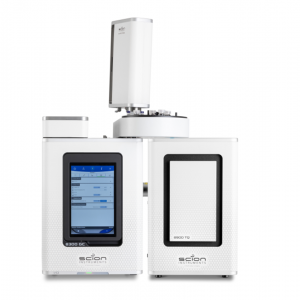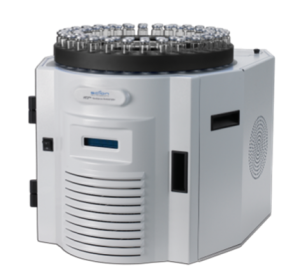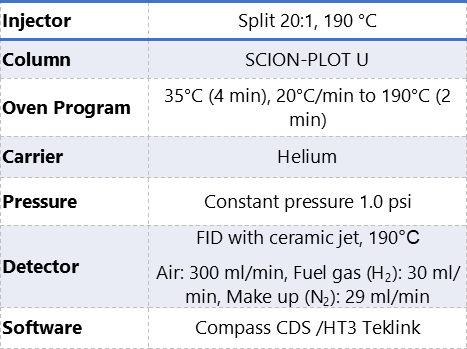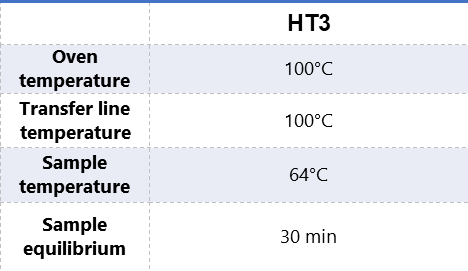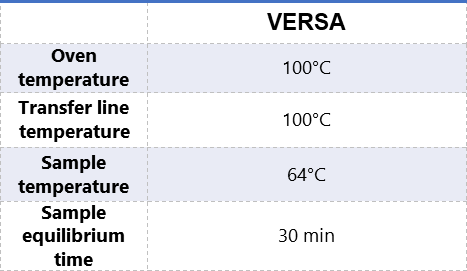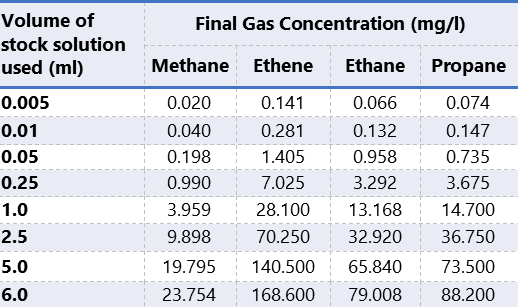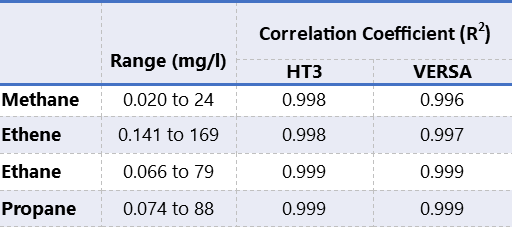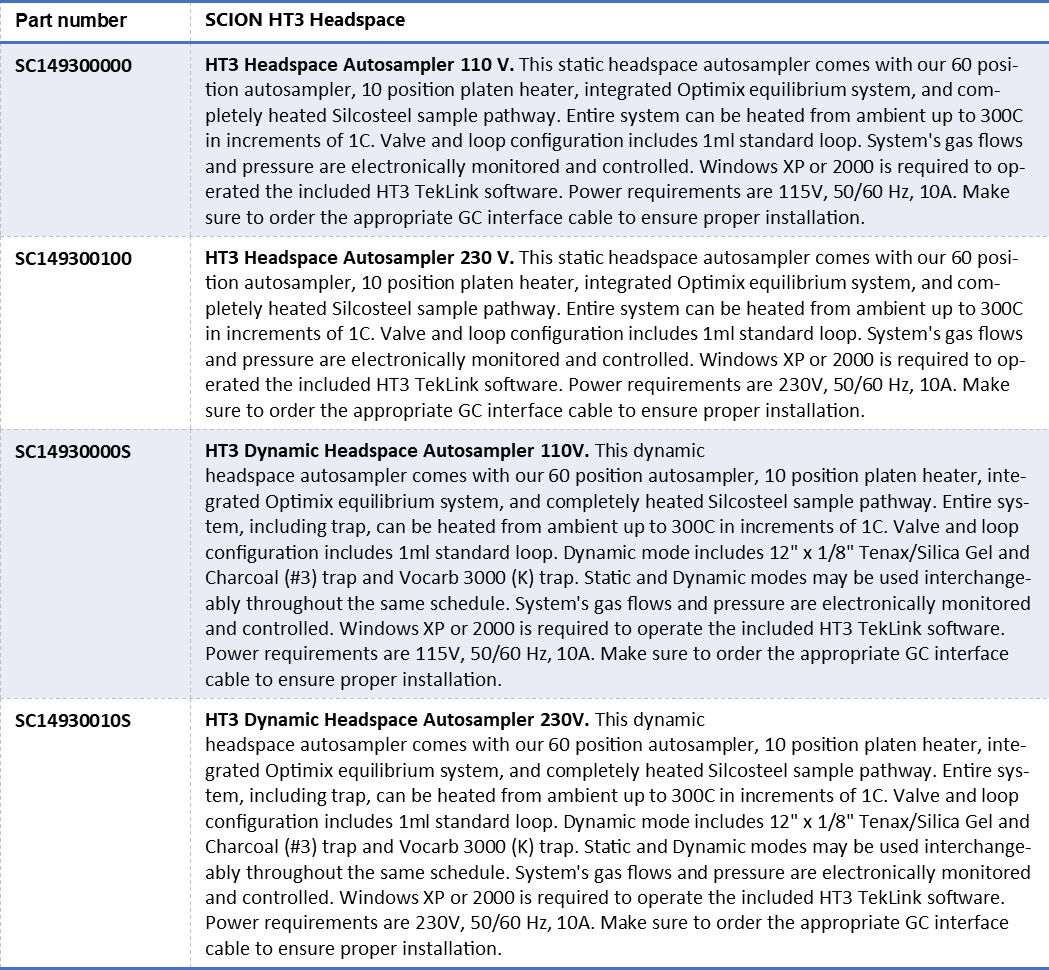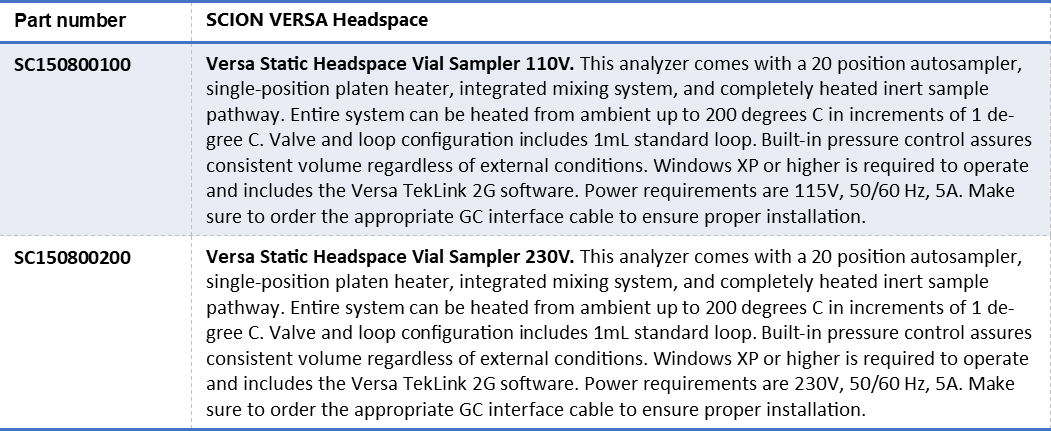Two Headspace Solutions for the Analysis of Dissolved Gases in Water by Method RSKSOP-175
Introduction
Dissolved gas analysis has been performed using a simplified headspace method following US EPA method RSKSOP-175. This method describes the preparation and analysis of dissolved gases in water. Recent developments in natural gas drilling from deep underground shale formations, using techniques such as hydraulic fracturing, have renewed interest in this method to determine dissolved gases in water with headspace analysis. This application note will demonstrate the versatility of SCION Instruments HT3 and Versa Automated Headspace Analyzers for determining dissolved gases in ground water samples. Methane, ethene, ethane, and propane were evaluated.
Figure 1. SCION HT3 Headspace Sampler together with the SCION Instruments 8300 GC platform in combination with to 8700 SQ-MS equipped with 8400PRO autosampler .
The Ground Water and Ecosystem Restoration Division of the U.S. Environmental Protection Agency developed a Standard Operating Procedure (SOP) for sample preparation and calculations for dissolved gas analysis in water samples using a GC headspace equilibration technique, RSKSOP-175.1 This method displaces approximately 10% of the water in the collection bottle with helium to create a headspace. The bottle is shaken for 10 minutes to allow for equilibrium to occur. An aliquot of the headspace is then sampled and injected into a GC system for the detection of the dissolved gases.
RSKSOP-175 is a manual headspace technique in which considerable labour is employed. This application note will demonstrate the capabilities of the SCION HT3 and Versa Automated Headspace Analyzers to prepare samples for the quantification of methane, ethene, ethane and propane from ground water samples. Table 1 displays the HT3, Versa method parameters and GC/FID parameters.
Table 1. Instrumentation operating conditions.
Standard Sample Preparation
Methane, ethene, ethane and propane were obtained from local gas suppliers. Saturated stock standards for each gas were prepared by bubbling the gas through 500 mL of reagent grade water at approximately 0°C. Calibration standards were prepared from the saturated stock gas solutions by diluting the stock standard to 10 mL of water in the headspace vials. The final volume of the solution was maintained at 10 mL. Table 2 displays the standard preparation and the associated concentration for each gas.
Table 2. Gas calibration standard preparations and concentrations
Seven replicates at the lowest calibration level were prepared to determine the MDL for each gas. 10 mL of chilled reagent grade water was placed into separated 22 mL headspace vials. 5 µL of the stock gas standard was added to these vials and quickly capped.
Results
The peak areas were determined for all gas samples using Compass Software. The response factors were determined for the calibration standards by dividing the peak area by the sample concentration. Seven replicates were run at the lowest gas standard solution to determine precision and method detection limits (MDL). These results are reported in Tables 3 and 4. Figure 1 is the chromatogram of a mixed gas standard and the comparison of methane and ethane with the HT3 and the Versa.
Table 3. Calibration data for methane, Ethene, Ethane and Propane
Table 4. Reproducibility Data for Methane, Ethene, Ethane and Propane
Conclusion
US EPA Method RSKSOP-175 was developed for determining dissolved gases using a manual headspace technique. The SCION Instruments HT3 and Versa Automated Headspace Analyzers were utilized to demonstrate their suitability to analyze dissolved gases which are sometimes found in groundwater samples.
Figure 2. Gas Chromatogram Comparison of Methane and Ethane between the HT3 and the Versa and the Chromatogram of the Four Gases.
Calibration standards were prepared for methane, ethene, ethane and propane in water. All calibration and precision data in this study exceeded normal quality control criteria. This coupled with the automation benefits make the HT3 or the Versa Automated Headspace Analyzers excellent choices when performing RSKSOP-175.
Order Information
Download Application Note
Download complete Application Note here: Two Headspace Solutions for the Analysis of Dissolved Gases in Water by Method RSKSOP-175
Keep in Touch
If you wish to keep up to date with SCION Instruments latest research and articles, why not join us on social media and sign up to our Linkedin newsletters today?

